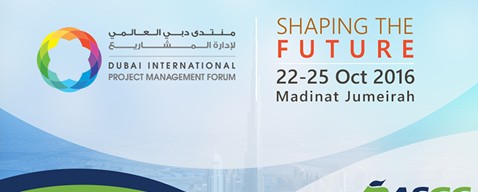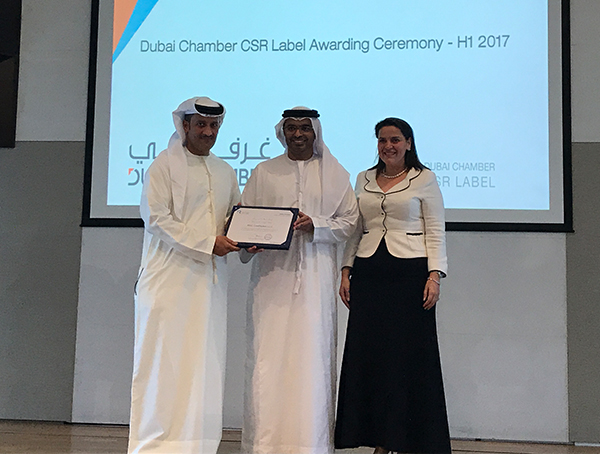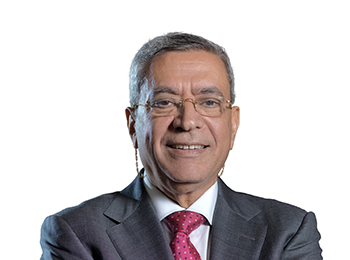ASGC is flying high thanks to its status as contractor of choice for government sponsored social infrastructure projects. CEO Bishoy Azmy tells Jason O’Connell how he successfully steered the company in a new direction over the course of a decade.
Bishoy Azmy has seen a few ups and downs in his time as chief executive of ASGC. First joining the company in 2002, he was elevated to the top job in 2008, just before the economic crash that took the wind out of the Dubai construction sector’s sails. Now, in the midst of another period of expansion for the industry, ASGC’s star is in the ascendancy while some other big names in the contracting business are still finding their feet.
“We’re a company that’s only really experienced and present in the UAE and primarily in Dubai and we’ve been around for 30 years,” he says. “We started out doing very small projects, then medium projects, then medium to large projects and then large projects in the more simple building sectors, like large residential and commercial complexes such as this one we’re sitting in now (Bay Square).”
The decision to move in a new direction was brought on by the global financial crisis of 2009 that almost brought the industry to its knees. Like most contractors, ASGC (then named Al Shafar General Contracting) was forced to take stock of the situation and plot a new course for the future or face the prospect of falling by the wayside.
“Post the 2009 crisis we had to think how we could be a long term player and the idea of depending purely on speculative real estate for work sounded very dangerous because we had seen the boom and the bust,” he says.
“And there may be a boom or there may be a bust in speculative real estate again over the next few years. Some people are saying property prices are depressed and can only go up. Others say we’ve not seen the worst of it yet because there’s so much oversupply. To be honest we will be affected one way or the other but less so now because of the kind of work we’re doing.”
While ASGC does not completely shun typical residential and commercial complexes, it was a deliberate strategic move to focus on projects that are more part of the growth story of Dubai than projects that cater to individual investors who come to the city to speculate on offplan real estate. Staying focused on the UAE while some competitors had their heads turned by other parts of the region has been another factor in ASGC’s success, he adds.
“I think what’s also helped us is the fact that we are UAE centric and I think that a lot of other companies may have continued doing well in the UAE but suffered more difficult consequences in markets outside our home base,” he says.
Working with a small pool of clients in Dubai – mainly what Azmy describes as government related entities (GREs) – has been central to the strategy. These include Dubai Airports, Dubai Municipality and The Roads and Transport Authority (RTA). And then there’s the government related developers such as Emaar, Meraas and Dubai Properties.
“Most of the projects that we’ve worked on for the last 10 years, 80% have been with a handful of customers, a single digit number. We’ve been working with the same customers again and again,” he says. “We think these clients just have a longer pipeline of projects. We want to focus on repeat customers who know us and where our efforts to go beyond the contractual and the industry norms of satisfaction are going to reap rewards.”
Is that why ASGC appears to be favoured by this small pool of government related clients?
“I don’t know if the word favour is appropriate but we vie to work with them a lot and we try to make sure they’re happy,” he says. “So the focus is not just on securing the project or making profit. If the customer wants something that in our view is not necessarily as per his contractual entitlement – we will try and make him happy.”
Social infrastructure projects such as museums, arenas and libraries tend to break the mold when it comes to design, making them more complex to build. Clearly, a strong track record of delivering such projects does no harm when it comes to winning repeat work. But is there a healthy profit margin involved as well?
“Yes, there should be,” Azmy says. “Because it’s more specialised you need to have that expertise to do it and not every company can necessarily do this. But they’re also higher risk projects so with high risk you run a chance of higher profits or you run a chance of going under!”
Determined to stay ahead of the pack in this sector, ASGC recently hired a new Chief Information Officer. Herbert Fuchs is charged with deploying innovations such as drones and 3D scanning technology across the contractor’s project portfolio. Azmy is clearly enthused by the arrival of Fuchs and the prospect of guiding ASGC into a new era of construction that will make the company stand out from its peers.
“I’m very excited about this. This is not an option, it’s a necessity today,” he says. “We’re investing a lot and I think the results will appear over the next few years. It will improve our efficiency and profitability and very importantly I think it will be a differentiator between those companies that can execute certain things in a certain way and in a certain time frame versus others who simply can’t and therefore are blocked out from most of the work coming in the future. But there are huge investments involved and it takes time.”
ASGC is pursuing a number of other innovations as well. With concerns over liquidity in the construction sector, there’s been much talk in the Middle East over the past couple of years about the potential emergence of alternative project financing models such as PPP and export credit finance. ASGC is pursuing both.
Another recent hire is Paul Woodman, former head of UK contractor Kier Group’s Middle East operations. Woodman is heading up new business unit ASGC UK to help offer clients in the Middle East the opportunity to fund schemes through a British government initiative.
“The strategy behind setting up in the UK,” Azmy explains, is to “offer clients a more complete range of services including potential financing. This financing is usually done by banks, but when you have a UK export finance angle to it financing becomes more attractive.”
PPP opportunities are also on the cards. Azmy confirms that ASGC is in final talks with Dubai’s RTA on the Union Oasis project which sits on a plot of land by the city’s busiest underground metro station – Union Station in Deira. The RTA issued a tender a year ago for developers and investors to take a 50 year lease on the land and build something on it while entering into a revenue sharing agreement with the RTA.
“This is not a construction project, it’s a development angle that includes the investor who would be us, putting money into it,” Azmy says without going into further detail.
Full circle?
With all of these innovations and an apparent supremacy in the social infrastructure space, ASGC seems well placed to compete for big jobs for years to come. But Azmy is refreshingly candid when asked what’s in store for the construction sector in the coming years.
“My honest answer is I don’t know,” he says. “I think we’re in such uncharted territory globally that the use of historical precedent to extrapolate how the future will pan out is becoming less and less useful. A typical cycle is thought to be around 10 years but I think now the world and Dubai and the construction and real estate industries are all part of interconnected factors that are not linear any more.
“So I think we have positives and negatives and I don’t know which of these forces will prevail over the next few years. And hence I don’t know what the landscape of construction and real estate will look like over the next few years. That’s my honest reply.”





